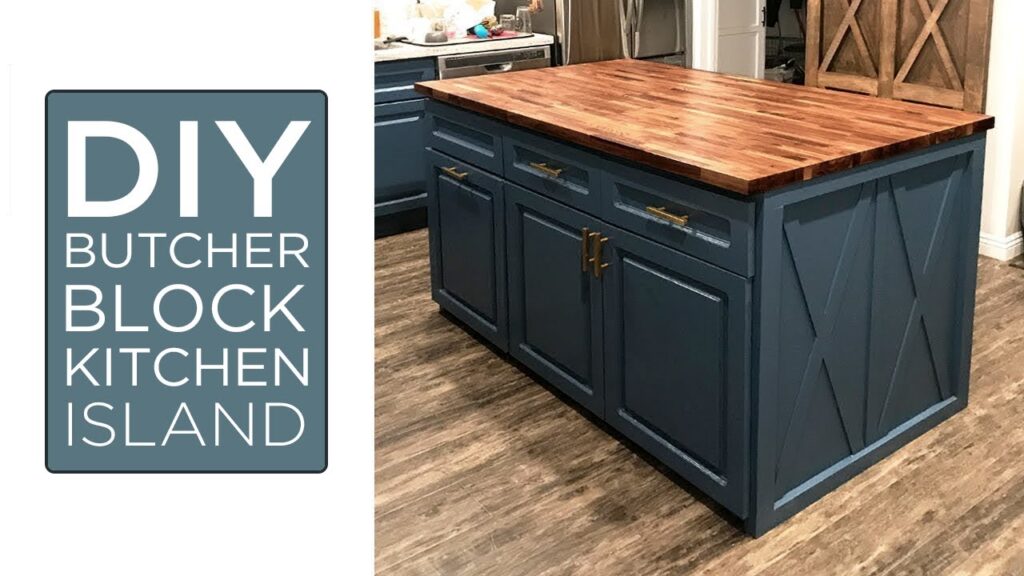How to Build a Kitchen Island: A Step-by-Step Guide
Building a kitchen island can be a rewarding DIY project that adds functionality and style to your kitchen. Whether you’re looking to create extra counter space, storage, or seating, a custom-built island can be tailored to your specific needs. In this comprehensive guide, we’ll walk you through the process of building a kitchen island from start to finish, covering everything from planning and design to construction and finishing touches.
Table of Contents
- Planning and Design
1.1 Determine the Size and Shape
1.2 Consider the Function
1.3 Choose the Materials - Building the Base
2.1 Assemble the Cabinet Boxes
2.2 Attach the Cabinets to the Floor
2.3 Create the Frame - Adding the Countertop
3.1 Measure and Cut the Countertop
3.2 Secure the Countertop - Finishing Touches
4.1 Install Trim and Molding
4.2 Paint or Stain the Island
4.3 Add Hardware and Accessories - Electrical and Plumbing Considerations
5.1 Install Electrical Outlets
5.2 Plumbing for a Sink or Appliances - Tips and Tricks
- FAQ Section
- Summary Table
1. Planning and Design
1.1 Determine the Size and Shape
The first step in building a kitchen island is to determine the size and shape that will work best in your kitchen. Consider the available space, the size of your kitchen, and the desired function of the island. A general rule of thumb is to leave at least 36-42 inches of clearance around the island for easy movement.
1.2 Consider the Function
Think about how you want to use the island. Will it be primarily for extra counter space, storage, seating, or a combination of these? This will help you decide on the size, shape, and features you want to include, such as drawers, shelves, or a built-in sink or cooktop.
1.3 Choose the Materials
Select the materials for your island based on your budget, style, and desired functionality. Common materials include:
- Cabinets: Stock cabinets, custom cabinets, or repurposed furniture
- Countertop: Granite, quartz, butcher block, or laminate
- Trim and Molding: Wood, MDF, or PVC
- Paint or Stain: Oil-based or latex paint, or wood stain
2. Building the Base
2.1 Assemble the Cabinet Boxes
If you’re using stock cabinets as the base for your island, assemble them according to the manufacturer’s instructions. Secure the cabinets together using screws or nails, making sure they are level and square.
2.2 Attach the Cabinets to the Floor
Once the cabinet boxes are assembled, secure them to the floor using concrete screws. This will prevent the island from shifting or moving over time.
2.3 Create the Frame
To add stability and support to the island, create a frame using 2×4 or 2×6 lumber. Attach the frame to the cabinet boxes using screws or nails. The frame should extend beyond the cabinet boxes on all sides to provide a base for the countertop.
3. Adding the Countertop
3.1 Measure and Cut the Countertop
Measure the top of the island frame and cut the countertop material to size. If you’re using a pre-fabricated countertop, make sure it fits properly before securing it in place.
3.2 Secure the Countertop
Apply a generous amount of construction adhesive to the top of the frame and carefully place the countertop in position. Use clamps to hold the countertop in place until the adhesive dries. If necessary, secure the countertop with screws from underneath.
4. Finishing Touches
4.1 Install Trim and Molding
Install trim and molding around the base of the island to create a finished look. You can use baseboard, crown molding, or decorative trim pieces. Miter the corners for a professional finish.
4.2 Paint or Stain the Island
If desired, paint or stain the island to match your kitchen decor. Apply a primer coat first, followed by two or more coats of paint or stain. Allow each coat to dry completely before applying the next.
4.3 Add Hardware and Accessories
Install cabinet pulls, knobs, or handles on the drawers and doors. If you’re adding open shelving or a towel bar, install those now as well. Consider adding decorative elements like corbels or columns to enhance the island’s appearance.
5. Electrical and Plumbing Considerations
5.1 Install Electrical Outlets
If your island requires electrical outlets, plan for their placement during the construction process. Install the outlets in the base of the island or along the sides, depending on your design. Make sure to follow local building codes and hire a licensed electrician if necessary.
5.2 Plumbing for a Sink or Appliances
If your island includes a sink or appliances that require plumbing, plan for the necessary plumbing connections during the construction process. Hire a licensed plumber to handle the installation and ensure that it meets local building codes.
6. Tips and Tricks
- Use a level to ensure that the island base is level and square.
- Measure twice, cut once to avoid mistakes.
- Clamp the countertop in place while the adhesive dries for a secure fit.
- Sand the island thoroughly before painting or staining for a smooth finish.
- Consider adding casters to the base of the island for easy mobility.
7. FAQ Section
1. Can I build a kitchen island without using cabinets?
Yes, you can build a kitchen island using other materials, such as repurposed furniture, shelving units, or a custom-built frame.
2. How much does it cost to build a kitchen island?
The cost of building a kitchen island varies depending on the materials and features you choose. On average, expect to spend between $500 and $5,000 for a basic island.
3. Can I build a kitchen island around existing appliances?
Yes, you can build an island around existing appliances, such as a cooktop or sink. Plan the island’s size and shape to accommodate the appliances and ensure proper ventilation and plumbing connections.
4. How long does it take to build a kitchen island?
The time it takes to build a kitchen island depends on the complexity of the design and your level of experience. A basic island can be built in a weekend, while a more complex project may take several days or weeks.
5. Do I need a permit to build a kitchen island?
In most cases, building a kitchen island does not require a permit, as it is considered a minor home improvement project. However, it’s always best to check with your local building department to ensure compliance with local codes and regulations.
8. Summary Table
| Step | Description |
|---|---|
| Planning and Design | Determine size, shape, function, and materials |
| Building the Base | Assemble cabinets, attach to floor, create frame |
| Adding the Countertop | Measure, cut, and secure countertop |
| Finishing Touches | Install trim, paint/stain, add hardware |
| Electrical Considerations | Install outlets for code compliance |
| Plumbing Considerations | Plan for sink or appliances requiring plumbing |
For more detailed information on building a kitchen island, you can refer to the This Old House website.Building a kitchen island can be a rewarding DIY project that adds functionality and style to your kitchen. By following this step-by-step guide and considering the planning, design, construction, and finishing touches, you can create a custom island that meets your specific needs and enhances your kitchen’s overall aesthetic.



